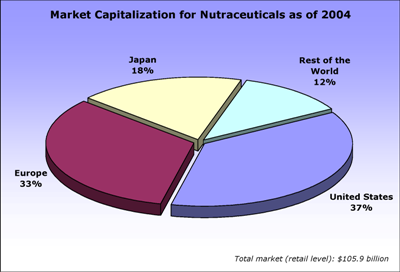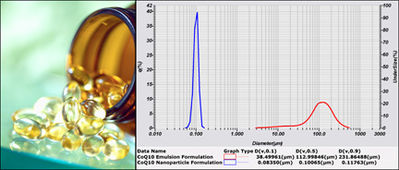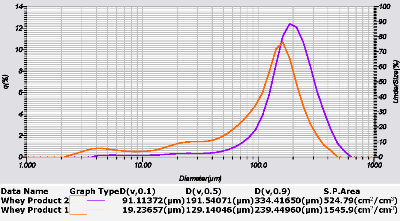

Nutraceuticals are food extracts that have been demonstrated to produce a physiological benefit or provide some protection against chronic disease. As the name implies, nutraceuticals are the intersection of nutrition and pharmaceutical and is an umbrella term that can also include functional foods and dietary supplements.

Nutraceuticals possess a “cure preference” over pharmaceuticals owing to cultural shifts towards naturally derived goods and drugs. Additionally, the typically high cost of pharmaceutical drug discovery (which in turn leads to high cost prescription drugs) is mitigated given the narrowed scope of active nutraceutical ingredients. Many foods already provide empirical evidence of imparting disease resistance to the consumer. To this end nutraceutical, pharmaceutical, and biotechnology companies have committed billions of dollars towards the research and development of commercially available foodstuffs such as omega-3 fatty acids that are both biocompatible and bioavailable.
Nutraceutical compounds do not yet fall under the same regulatory guidelines and control known to the pharmaceutical industry, but many of the same analytical studies are conducted. Quantitative particle size, particle shape, and zeta potential analysis provides information that has either a direct effect or correlation to issues such as bioavailability, solubility, formulation stability, and quality control.

Several promising nutraceutical materials are included as case studies in the Nutraceutical Application Note. Among them are examples of identifying unwanted contaminants, comparing different formulations for particle size and bioavailability, and increasing solubility of a material via particle size reduction and the resultant increase in specific surface area.

Nutraceutical researchers working to improve the bioavailability, biocompatibility, and stability of various formulations measure particle size, particle shape, and zeta potential. Various techniques are now capable of measuring particle size in the nanometer, micrometer, and millimeter size ranges. These techniques include laser diffraction, dynamic light scattering (DLS), static image analysis, and acoustic spectroscopy. The LA-960V2 laser diffraction particle size analyzer is the best choice when measuring many materials occupying different size ranges and requiring fast, flexible analyses. The SZ-100V2 nanoparticle analyzer provides size information for nano scale suspensions and emulsions through a simple, robust user interface.
Vitamins
The size of vitamins is measured using dynamic light scattering.
Dendrimers
The size of dendrimers is measured using dynamic light scattering.
Liposomes
The size of liposomes is measured using dynamic light scattering and laser diffraction.
Viruses & Virus-Like Particles
The size of viruses and VLPs is measured using dynamic light scattering and laser diffraction.
Laser Scattering Particle Size Distribution Analyzer
Nanoparticle Analyzer
Do you have any questions or requests? Use this form to contact our specialists.